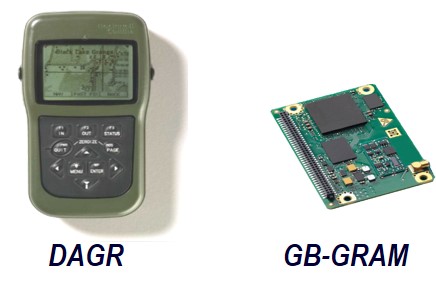Field operations can challenge equipment that uses low-power radio signals like the global positioning system (GPS). For maximum performance in military operations, securing every positioning, navigation, and timing (PNT) device like your Defense Advanced GPS Receiver (DAGR) or Ground-Based GPS Receiver Applications Module (GB-GRAM) is critical.
For this reason, they should always be loaded with communication security (COMSEC) crypto variable keys. This is your best defense against signal interference. When “keyed,” your receiver gives the highest level of anti-spoofing and anti-jam protection and PNT accuracy.
Importance of Keying your DAGR or GB-GRAM
Failure to key your DAGR or GB-GRAM means it’ll perform just like a standard commercial GPS receiver and not deliver the accuracy required for combat, combat support or combat service support operations. Therefore, it’s critical to perform pre-combat checks (PCCs) and pre-combat inspections (PCIs) to confirm that your GPS receiver is “keyed.”
 Images of DAGR (left) and GB-GRAM (right)
Images of DAGR (left) and GB-GRAM (right)
For the DAGR, accessing the port (J1 connector) for loading the crypto variable key is easy.
With the GB-GRAM, the line replaceable unit (LRU) with the GB-GRAM embedded inside isn’t routinely opened at the unit level. Instead, these LRUs are required to have access points for loading (key-fill) crypto variable keys. Check your LRU carefully. If it has a key-fill device, review the TM to determine if the GPS key-fill is required. If so, follow the TM instructions to maintain the key.
To make maintaining COMSEC keys easier, the GPS system has over-the-air distribution (OTAD) of keys. Physical keying is now only performed annually. Once that’s done, devices only need to be turned on once a month to receive the new crypto variable keys distributed by OTAD.
Questions or need help with keying or software for your DAGRs or GB-GRAMs? Contact PM PNT’s Stephen Morrissey by email:
stephen.r.morrissey.civ@army.mil
Editor’s note: Many thanks to Stephen Morrissey for his contributions to this article.